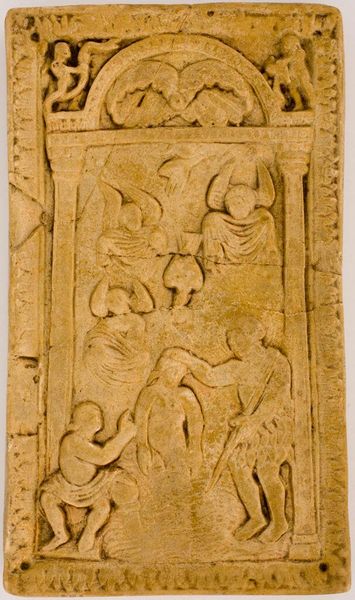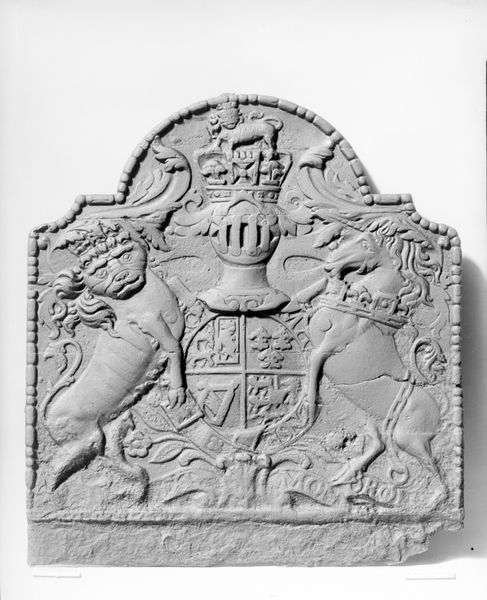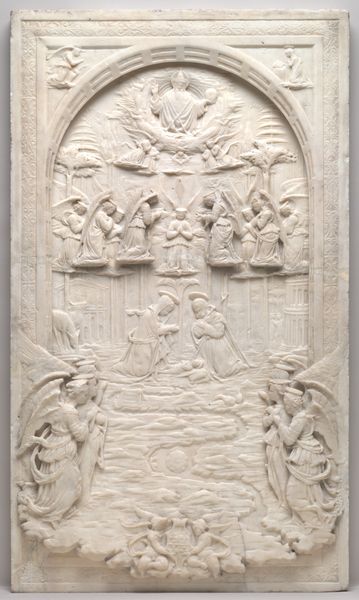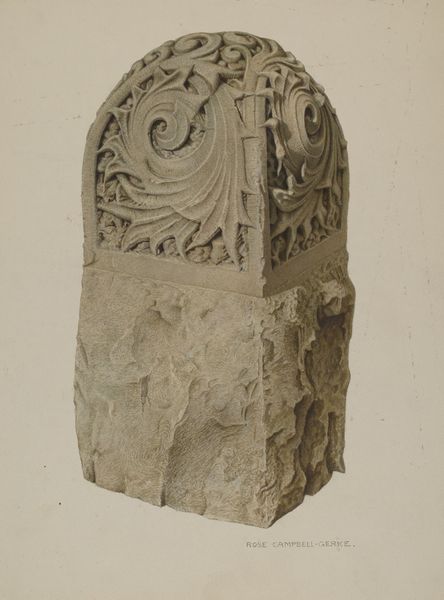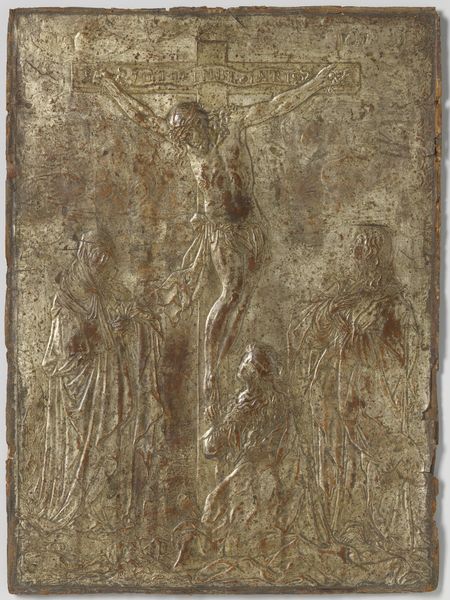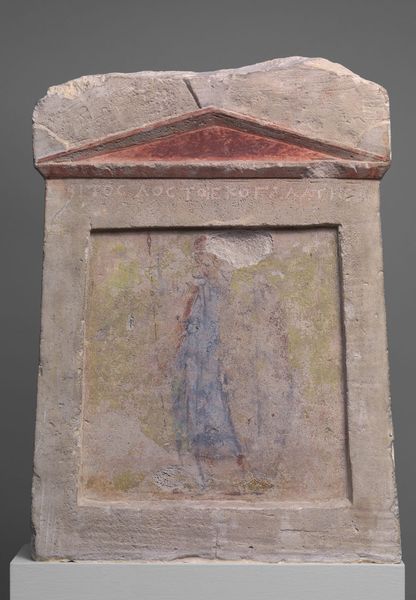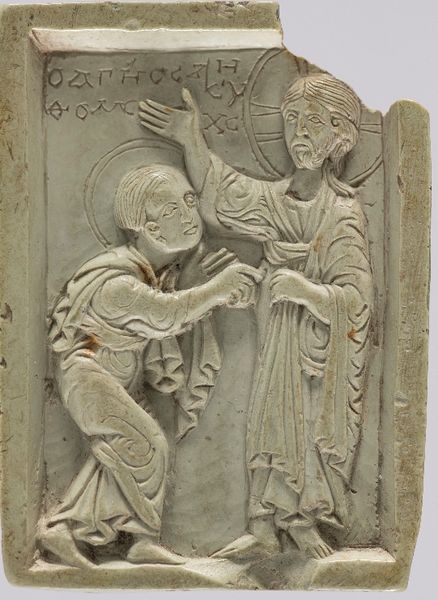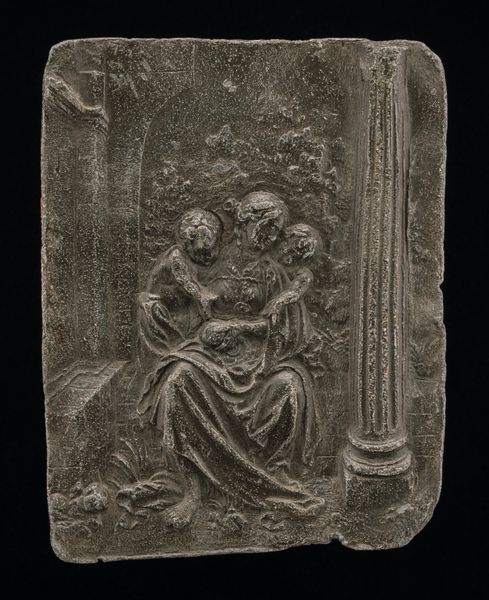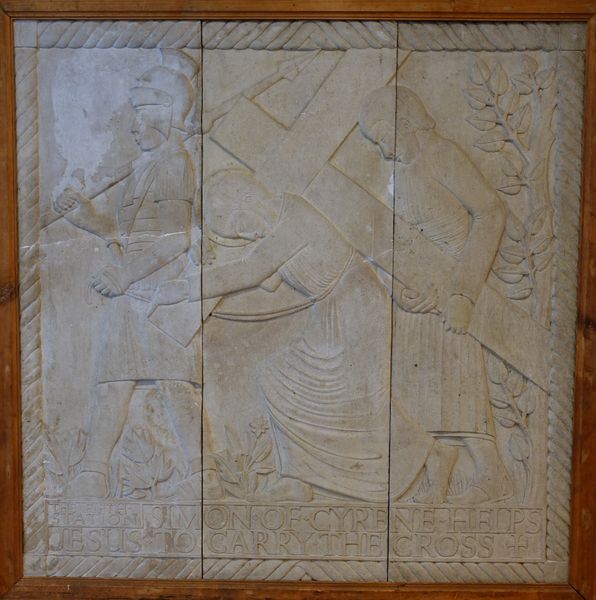
carving, relief, sculpture, wood
#
medieval
#
carving
#
sculpture
#
relief
#
figuration
#
sculpture
#
wood
Dimensions: 105.5 cm (height) x 80.5 cm (width) x 5.5 cm (depth) (Netto)
Curator: Look at this intriguing wood relief titled "The Deer at the Cross," created by Niels Skovgaard in 1908. What are your first thoughts? Editor: The immediate impression is its stark simplicity. The pale wood and low relief give it an almost ghostly, ethereal quality. The deer feel trapped, pressed against the cross. Curator: Skovgaard’s choice of wood and his carving technique are significant here. He uses the inherent texture of the material to evoke a medieval sensibility, linking it to older forms of religious folk art, but elevated into high art through its association with his celebrated painter father. Consider the labor involved; each line carefully considered. Editor: Absolutely. The placement of this object matters so much, too. I am wondering if displaying it within the context of the SMK museum imbues it with institutional validation, something potentially inaccessible to folk artisans, influencing public perception of what’s “art” versus craft. The historical associations we now place on such a work impact its message. Curator: Exactly! Furthermore, this work represents the Arts and Crafts movement and its fascination with returning to 'honest' materials and traditional skills. In its time, mass production and new industries started to erode the market share of traditionally crafted artworks, so here, a fine artist is consciously engaging with them and repurposing craft values for their art practice. Editor: Thinking about the audience and the public display, the cross as a central motif cannot be ignored and invites theological interpretations. However, in bringing the scene of vulnerable animals, it broadens out to ecological and ethical reflections as well. Curator: Skovgaard consciously invokes medieval visual language. I believe there’s also a nod to Danish national identity, and perhaps even critique surrounding industrialized progress encroaching on a more pure relationship with the land and with artisanal labor. Editor: That makes sense. It's fascinating how the presentation in a museum like SMK elevates its cultural weight and ties into notions of national heritage as well as Christian iconography. Curator: Yes, its power is located not just in the artist’s skill but in its continuing circulation and how we continue to invest it with meaning. Editor: A piece that reminds us that our interpretation of art always involves engaging with a network of historical contexts, institutional decisions, and, most definitely, the artwork's material origins.
Comments
No comments
Be the first to comment and join the conversation on the ultimate creative platform.
